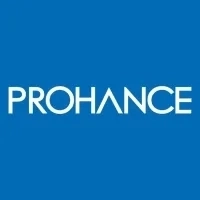A well-designed and well-executed asset management strategy can lead to significantly better reliability and lower maintenance cost. Such a strategy requires accurate and up-to-date asset and maintenance information to set priorities right. It also includes the maximization of condition-based and predictive maintenance while keeping reactive maintenance to a minimum.
There are many approaches to predictive maintenance. To get started with predictive maintenance in process plants, it’s necessary to be able to monitor a large numbers of tags and learn based on historical data across the full plant. Precognize, a provider of predictive maintenance solutions for the process industries, offers such a solution. Its technology combines machine learning (to determine normal and abnormal behavior), augmented with a combined asset and process model with information about cause-and-effect relationships among variables. The technology is designed to require minimum effort by the plant operator to build. This technique enables minimizing false positives.
Carmel Olefins, part of the Bazan Group, recently testified about its use of the solution in a polyolefins plant and how this helped the company address environmental issues. The company found that the tool helps its operations team detect operational issues in the “darkest corners” of the plant, where “it hurts the most.” Looking back, the solution could have detected/prevented a valve issue before the valve failure resulted in negative publicity due to the environmental impact. The software can also provide advance warnings for any new valve issues. Since it began using the software, the company gets only a few alerts per day and has not experienced many false positives.
Effective Asset Management Strategies
According to industry analysts, world-class oil and gas producers have 95 to 98 percent availability (even in older facilities), while their maintenance cost is 30 percent less than average. This compares to 85 percent availability for the average producer and less than 75 percent for a poor performer. Also, the safety incident rate is 30 percent lower among leaders than average. Apparently, these companies make the right decisions on savings and investments. For example, the value of their small-modification project portfolio can be up to 50 percent higher than that of average operators. Furthermore, those operators apply some form of asset maintenance excellence, including a regular review of their policies and nurture  a culture that continuously eliminates all sources of losses. Seventy-percent of the maintenance jobs in the leaders group are of preventive nature. These companies optimize preventive and condition-based maintenance of their critical equipment, while minimizing additional maintenance for less-critical systems. Another finding was that these companies have good planning and scheduling processes that optimize the use of their maintenance resources, tool allocation, and support flawless process execution. Work that needs to be executed during stops is particularly well planned and re-planned at well-defined intervals before executing the plan.
a culture that continuously eliminates all sources of losses. Seventy-percent of the maintenance jobs in the leaders group are of preventive nature. These companies optimize preventive and condition-based maintenance of their critical equipment, while minimizing additional maintenance for less-critical systems. Another finding was that these companies have good planning and scheduling processes that optimize the use of their maintenance resources, tool allocation, and support flawless process execution. Work that needs to be executed during stops is particularly well planned and re-planned at well-defined intervals before executing the plan.
The numbers may have shifted a little over time and may be a little different for downstream processing, but the features of this benchmark in maintenance strategy and execution remains valid. Whatever the methodology used – reliability centered maintenance (RCM), operational excellence (OpX), or world-class manufacturing (possibly in combination with an asset management standard such as ISO 55000) – the point is that an asset management strategy is required to set priorities and devise a fit-for-purpose approach adapted to each priority.
Asset and Maintenance Data Availability, Quality, and Integrity Required
To decide upon asset management priorities, good-quality data are required that, ideally, are easy to access. This includes statistics on the number of maintenance interventions, root causes of equipment failures, cost of repair, overall equipment efficiency (OEE) broken down into unwanted stops, planned stops, throughput reductions, and quality losses. It’s also very important to know the cost of production losses related to unwanted stops. This will inform the operator how much effort and resources he is spending, where to focus, and which goals to define. A quantified business case could also help decide where to best focus efforts and optimize for return on investment. Even if the quality, availability, and integrity of asset information are not optimal, an operator should engage in improving and optimizing maintenance. However, the operator should be aware that the preliminary effort would be higher and the time to results longer.
Fit-for-purpose Asset Management Approaches
Once the owner-operator knows its asset priorities, it can prioritize the maintenance efforts, also referred to as “fit-for-purpose.” Since most equipment fails randomly, preventive maintenance based on regular inspections, replacements, and maintenance corresponds to a higher workload and cost than reactive maintenance and does not necessarily improve reliability significantly.
 For less-critical equipment, for example a lawn mower – a run-to-failure approach (reactive maintenance) may be most economical. Workload and cost can be reduced while preserving reliability of more critical equipment by using condition-based maintenance based on instrumented monitoring of a few key variables and attributes of the equipment. Only when the trends indicate that maintenance is necessary will it be planned and executed. Often this leads to longer average times between maintenance intervention, but the approach can also determine if maintenance intervals need to be shortened to avoid damage or impact on the process. This can be useful for slowly degrading equipment performance, such as in the case of clogging of filters and fouling of heat exchangers that depend more on the processing conditions than on elapsed time. Condition-based maintenance, because it reflects the actual state of the equipment, increases reliability and reduces cost. In these examples, condition-based maintenance includes a simple evaluation by maintenance personnel. In the case of predictive maintenance, the evaluation of the equipment condition and the prediction of a potential failure or issue is made by mathematical methods and algorithms, also called predictive asset analytics.
For less-critical equipment, for example a lawn mower – a run-to-failure approach (reactive maintenance) may be most economical. Workload and cost can be reduced while preserving reliability of more critical equipment by using condition-based maintenance based on instrumented monitoring of a few key variables and attributes of the equipment. Only when the trends indicate that maintenance is necessary will it be planned and executed. Often this leads to longer average times between maintenance intervention, but the approach can also determine if maintenance intervals need to be shortened to avoid damage or impact on the process. This can be useful for slowly degrading equipment performance, such as in the case of clogging of filters and fouling of heat exchangers that depend more on the processing conditions than on elapsed time. Condition-based maintenance, because it reflects the actual state of the equipment, increases reliability and reduces cost. In these examples, condition-based maintenance includes a simple evaluation by maintenance personnel. In the case of predictive maintenance, the evaluation of the equipment condition and the prediction of a potential failure or issue is made by mathematical methods and algorithms, also called predictive asset analytics.
Choosing an Asset Analytics Approach
Many types of analytics are available that can be applied to industrial processes to improve process understanding by studying past and current behavior. Technologies are becoming increasingly more capable of predicting behavior and prescribing options for process management. Analytics can be applied to assets, covering the gamut from quality, process, the supply chain, and combinations of those. Some solutions focus on a single variable and/or on a few variables of a specific type of equipment and can  detect anomalies very early; in fact, early enough to be able to maintain or repair the equipment before an unplanned shutdown occurs with unnecessary damage or loss of containment. Some warning signals are easy for humans to detect. Examples include a gradual increase in power consumption and vibration of a pump that maintains a constant flow. But some weak signals are hidden in the variability of the data and not visible to humans. However, software can detect breakdowns weeks or months in advance.
detect anomalies very early; in fact, early enough to be able to maintain or repair the equipment before an unplanned shutdown occurs with unnecessary damage or loss of containment. Some warning signals are easy for humans to detect. Examples include a gradual increase in power consumption and vibration of a pump that maintains a constant flow. But some weak signals are hidden in the variability of the data and not visible to humans. However, software can detect breakdowns weeks or months in advance.
In some cases, deviations are only relevant in combination with deviation of other variables. In continuous or batch processing, relationships between variables are very common and find their origin in the physics and chemistry governing the process. Many can be modeled accurately using scientific and engineering approaches, as is done in process simulation. Simulations can be made for steady-state or transient conditions and can be of great value in process design and analysis. Used in combination with historical data, these tools can help explain relationships that led to unexpected events. Owner-operators should design process management measures to avoid these. These tools, when used online, could support better operating decisions. However, detecting a small deviation that could lead to important consequences would likely require high-fidelity simulations, which are extremely costly and resource-consuming to build. So, for discovery and predictions, another approach is needed.
Where to Start
When starting to apply asset analytics, the task of setting up monitoring of critical equipment can be daunting, not to mention actually monitoring the information and setting up predictive analytics. This is particularly true for large processing plants such as in refining, petrochemicals, steel, or paper production with thousands of tags, measurements, and possibly augmented with IoT sensors. In such cases, an approach is needed that can monitor all this equipment and detect the most important deviations, creating few false positives. Ideally, this would require a relatively small investment in terms of resources. For any analysis to give meaningful results, the quality and the integrity of operational data quality used must be adequate. In some cases, data must be screened and cleaned.
Precognize’s Predictive Maintenance Solution
Precognize provides a solution precisely for the situations described in the previous paragraph. As a starting point, the technology uses about a year of historical data from operational databases at one-minute intervals that is available at every processing plant. Using an unsupervised process, the software determines regions of usual behavior of each tag in relation to each other to create what Precognize calls the baseline machine learning model. This is multivariate in nature; that is, a variation in a tag value is normal or abnormal only in relation to values of other tags. To avoid false positives, the solution feeds the content of this model to a second model representing cause-and-effect relationships. This increases the precision in distinguishing normality from abnormality. Operations know-how is required during the software configuration phase to help specify relationships between equipment properties and process variables. These relationships have a direction, from cause to effect, or could be bi-directional.

The information is internally converted into graphs with well-specified mathematical properties and are inputs for the graph analysis engine. Based on the know-how from operations, the engine can score the relevance of the detected abnormality (taking its evolution into account), propose a root cause, and display a suggestion for intervention. The user can further fine-tune the model, for example by manually specifying a root cause. The solution runs in the Precognize or the client’s private cloud on a virtual or physical machine with 32 Mb RAM and 12 cores. Users access the system using their standard browsers.
Addressing Environmental Concerns with Predictive Maintenance
Carmel Olefins reported recently at ARC’s European Industry Forum about its experience with the software. The company, part of the Bazan Group, produces polyolefins – low density polyethylene (LDPE) and polypropylene (PP) – in the bay of Haifa, Israel, a densely populated area. Currently, Israel does not have regulations prohibiting flaring. Carmel Olefins uses flaring to safely discharge light hydrocarbons in the case of over-pressure. On September 1st, 2017, a huge flare started burning 40 tons of hydrocarbons per hour and within five minutes the company was in the news for all the wrong reasons. Half an hour later, a faulty valve was identified as the cause of the incident. The company decided to “go digital” and apply predictive analytics to reduce, and if possible, avoid such incidents. It selected Precognize software, because it can cover the full plant and be implemented quickly. Moreover, the company found Precognize is responsive to demands and the software is used by BASF, a reliable reference.
 A post-event analysis of the flaring showed that Precognize could have detected (and thus helped prevent) the valve issue three weeks before the incident. After implementing the software application, Carmel Olefins only gets a few alerts per day and with few false positives, which helps preserve maintenance efficiency. The company recommends starting “where it hurts the most,” that is, where risks and impacts are most severe, and to make the production manager with the shift supervisor of the unit responsible for the outcome. The challenges are to change the mindset and attitude of production personnel from it is broken, let’s fix it,” to there is something strange here, let’s investigate it.”
A post-event analysis of the flaring showed that Precognize could have detected (and thus helped prevent) the valve issue three weeks before the incident. After implementing the software application, Carmel Olefins only gets a few alerts per day and with few false positives, which helps preserve maintenance efficiency. The company recommends starting “where it hurts the most,” that is, where risks and impacts are most severe, and to make the production manager with the shift supervisor of the unit responsible for the outcome. The challenges are to change the mindset and attitude of production personnel from it is broken, let’s fix it,” to there is something strange here, let’s investigate it.”
A real-time issue provided the opportunity to inculcate new habits. In this case, it appears that a temperature rise of the contents of a pipe that depends on a steam valve opening occurred without the valve actuator moving. Precognize detected the problem, which was not complex to diagnose: the valve did not close properly despite its setpoint and the leaking steam caused the temperature rise. The valve could be repaired before an incident or further damage occurred.
Carmel Olefins recommends using predictive analytics to put a spotlight on the “darkest corners” of the process that remain invisible through human observation of trends. At Carmel, full transparency is applied in the sense that analytics results are visible throughout the ranks, including upper management. However, only production personnel and shift managers act on the signals from the software.
Conclusion
ARC recommends elevating asset management to the strategic level because of the importance of its impact on enterprise KPIs such as bottom line earnings, environmental footprint, and process safety. This strategy will provide the governance and the management system, enabling a maintenance strategy. The latter depends on the quality of asset information. A maintenance strategy should focus on high-priority equipment and processes, maximizing condition-based and predictive maintenance and minimizing preventative maintenance. Predictive analytics are a key technology enabler for predictive maintenance. However, the operational data used to build models to detect anomalies must be of adequate quality.
The Precognize predictive maintenance solution was designed to help owner-operators reliably detect operational issues in large process plants with large number of tags, with a limited effort required from the plant operator in the configuration phase. It’s essential to involve operations personnel and transform their habits from break-and-fix to investigating alerts and preventing incidents and damage. The latter may require management attention.
Reprinted with permission, original blog was posted here”. You may also visit here for more such insights on the digital transformation of cities and industry.
About ARC Advisory Group (www.arcweb.com): Founded in 1986, ARC Advisory Group is a Boston based leading technology research and advisory firm for industry and infrastructure.
For further information or to provide feedback on this article, please contact akanagali@arcweb.com
About the Author:
Valentijn de Leeuw
Vice President
Valentijn’s responsibilities include research and consulting in the process industries, with a focus on clients in Europe, the Middle East, and Africa. Valentijn has extensive experience in best management practices in process industries. His experience includes knowledge of unit processes, simulation and modeling, and business practices utilizing application software designed for manufacturing operations. He also has experience in aligning organizations, strategy, business processes and technical architectures. At ARC, Valentijn’s responsibilities include research and consulting in process industries. His technology focus is on manufacturing operations management, performance management, knowledge management, and the role of the knowledge worker in manufacturing. Valentijn is the focal point for the ARC Benchmarking Consortium in EMEA.





![[Part 2/2] : Innovating Care: How HealthTech Startups Are Reshaping The Present and Future of Indian Healthcare](https://community.nasscom.in/sites/default/files/styles/560_x_350/public/media/images/ai-generated-9106907_1920-edited_0.jpg.webp?itok=xWs8wsoD)

![[Part 1/2] : Innovating Care: How HealthTech Startups Are Reshaping The Present and Future of Indian Healthcare](https://community.nasscom.in/sites/default/files/styles/560_x_350/public/media/images/ai-generated-9106907_1920-edited.jpg.webp?itok=fJ3Yrln6)







